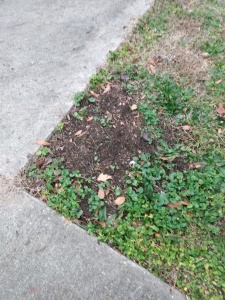
This year I fixed my lawn a bit. It really needed it and it took a lot of work.
I had a row of holes in the backyard where trees were removed before I moved here; the previous owner filled in the three holes with large rocks. What a fail! I removed the rocks and have slowly been adding soil to them every other year to get them level with the rest of the yard. They were the first of the issues, but after eight years of home ownership, things have gotten treacherous in other locations as well.
Mowing my lawn is a monthly challenge with a maze of tripping hazards.
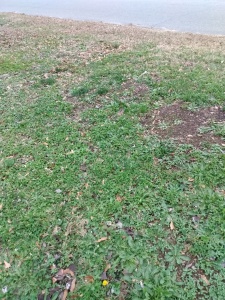
Voles have been attacking the front yard, leaving an ankle-twisting mess.
Along the sides of the house, dirt has disappeared somewhere. Plus other random holes that just develop over time.
So I bought dirt from various home improvement stores (bought out three stores) to level the yard during September and October. I got this neato leveling dirt tool which really sped things up – no raking and shoveling. Just dump a bag of dirt and zip back and forth for a while until all-flat. Toss some seed on top of it.
Total bags bought … 60! I think they weighed about 40 pounds on average. They are sold by volume. When wet, they weigh a lot more (and broke more easily – man, my van got muddy during this project). Basically I moved a ton of soil this fall. (60 * 40 = 2,400 pounds)
The grass is beginning to grow in. I’ll need to touch up on this going forward. I’m thinking about 10 bags a year for maintenance.
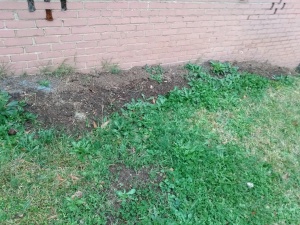
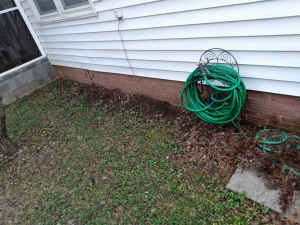
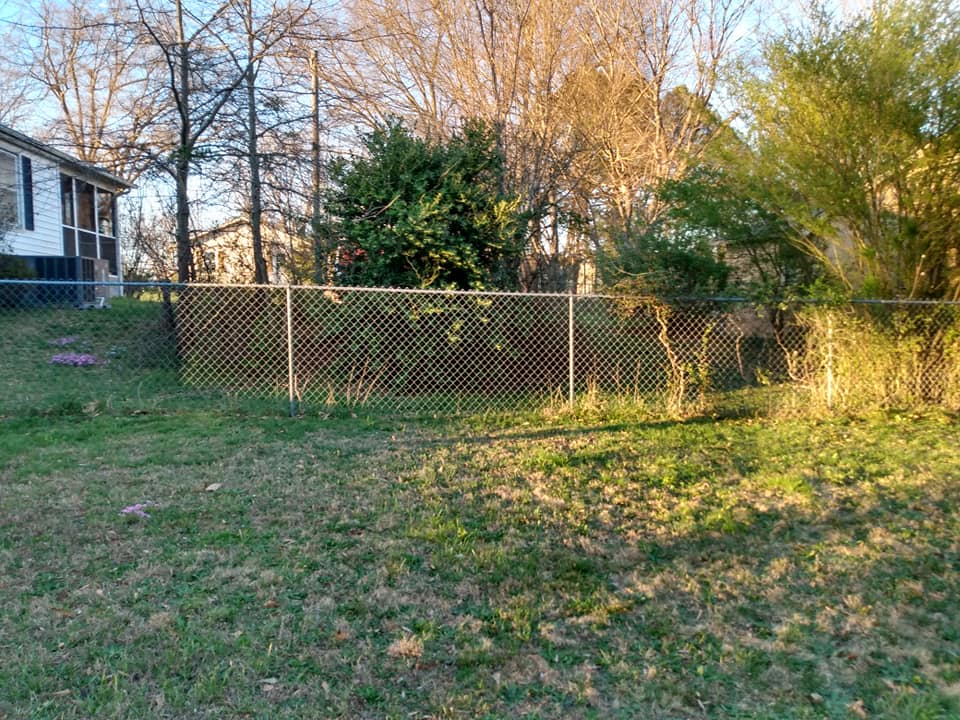
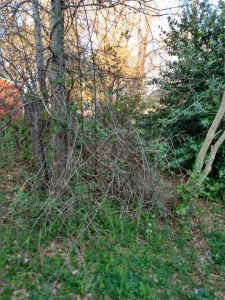 These tree grow fast and are unstable. They need to go, but the vines … so many vines in the jungle, make them hard to get to. In addition, weed trees are hard to kill – they grow nearly as fast as I can cut them back.
These tree grow fast and are unstable. They need to go, but the vines … so many vines in the jungle, make them hard to get to. In addition, weed trees are hard to kill – they grow nearly as fast as I can cut them back.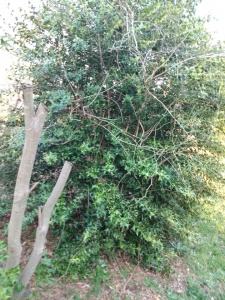 In front of the holly trees are one of the many volunteer mimosas I’m trying to remove. Talk about weed tree volunteers. One is cracking cinder blocks near my foundation in the jungle area.
In front of the holly trees are one of the many volunteer mimosas I’m trying to remove. Talk about weed tree volunteers. One is cracking cinder blocks near my foundation in the jungle area.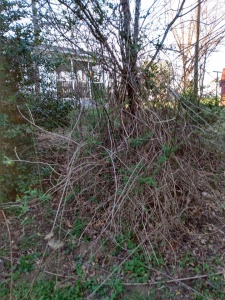
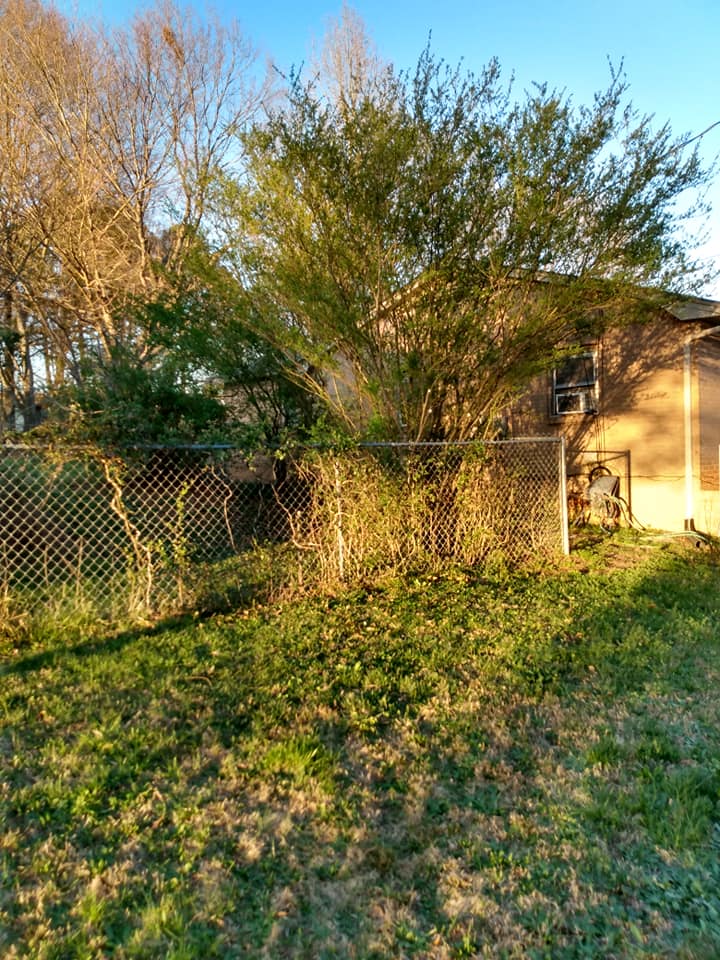
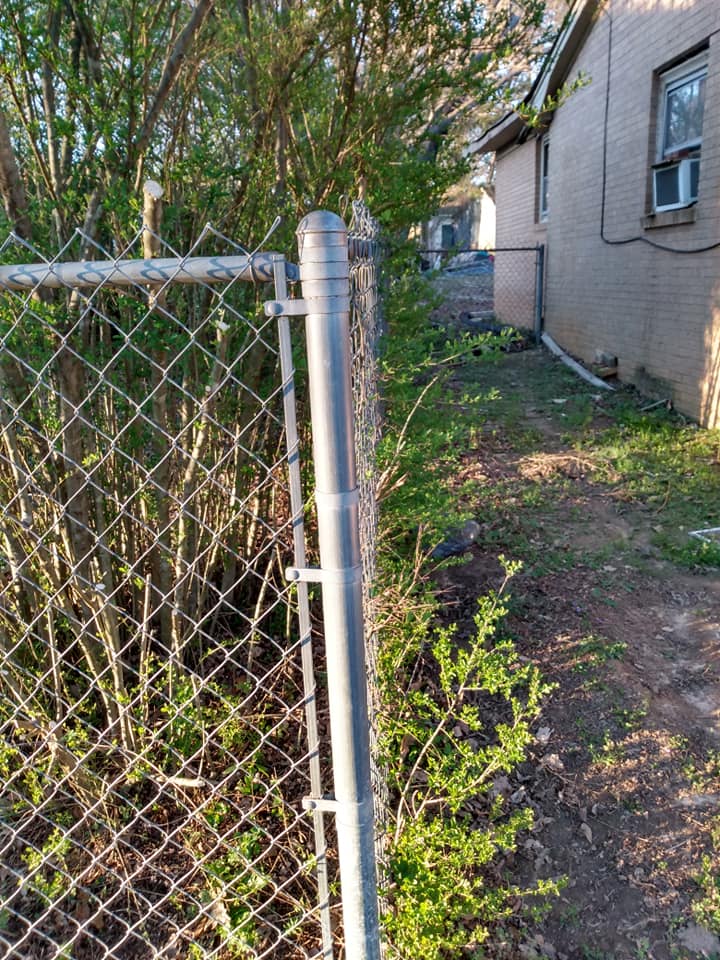
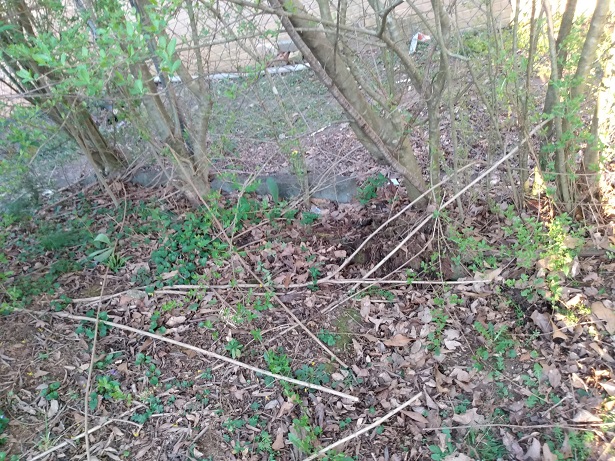
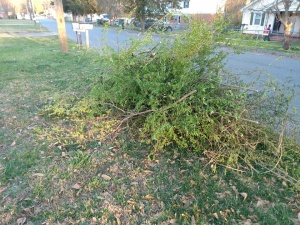 One of my ongoing goals is removing my jungle and replacing the hill with azaleas, rock walks, and bulbs. Something maintainable, that won’t be trying to take over the world.
One of my ongoing goals is removing my jungle and replacing the hill with azaleas, rock walks, and bulbs. Something maintainable, that won’t be trying to take over the world.



